Reflecting on Collaborative Book Making
In this session, we utilised a range of industry skills from magazine and book publishing. Ideally, we aimed for the creativity of a small photo-book publisher while working at the speed of a daily news desk.
Skills covered during this session included:
- Sequencing
- Editing
- Book making
- Industry skills
- Working with archives
- Collaborating
- Photo editing
- Book design
The images we worked with came from the Library of Congress, while the texts were borrowed from Octavia E. Butler’s novel Parable of the Sower. I was curious to see what would emerge when two seemingly disparate archives were brought together in a publication. As expected, there were some obvious similarities between them.
Reflections on the Library of Congress Archive
The images, all in the public domain, came from one of the most famous collections of documentary photography. Walker Evans, Dorothea Lange, Gordon Parks, and others were hired during the 1930s to document Roosevelt’s New Deal policies in action. This era is often seen as the foundation of documentary photography, yet since the project was commissioned by the United States government, it could also be considered a form of propaganda. Additionally, it was important to remember that many Southern states were still segregated under racist Jim Crow laws during this time.
Reflections on Parable of the Sower by Octavia E. Butler
The texts we incorporated were taken from Butler’s seminal novel, Parable of the Sower. Butler remains one of America’s great sci-fi writers and one of the few Black women to receive serious recognition in the genre. The novel follows the migration of a young protagonist from Los Angeles, told through her diaries, and is set against the backdrop of climate change and the Anthropocene.
For this session, students created a collaborative publication, designing, sequencing, and binding it together. Given the limited time of 20 minutes, I structured the tasks clearly at the beginning and introduced additional elements throughout the class. To ensure safety, I operated the in-house bindery myself.
This task raised several important questions:
- What is truth in photography?
- Who controls the narrative in these photographs?
- How does the context of these quotes influence our interpretation?
It was fascinating to see how students engaged with these questions and the creative decisions they made in merging these archives into a single publication.
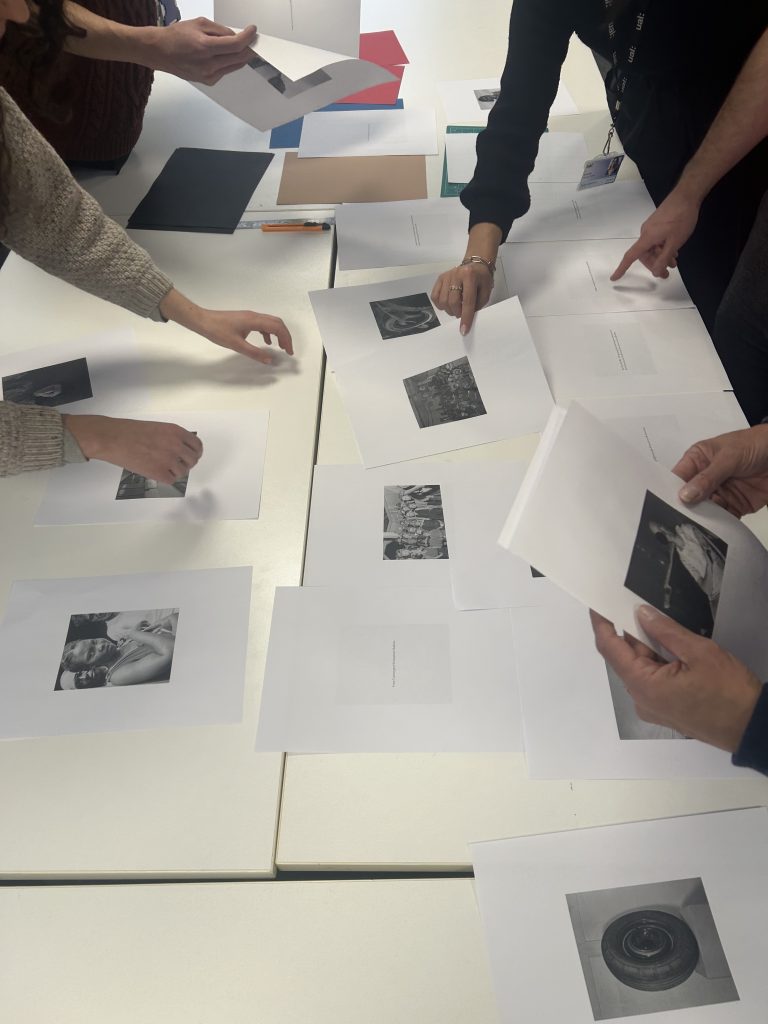
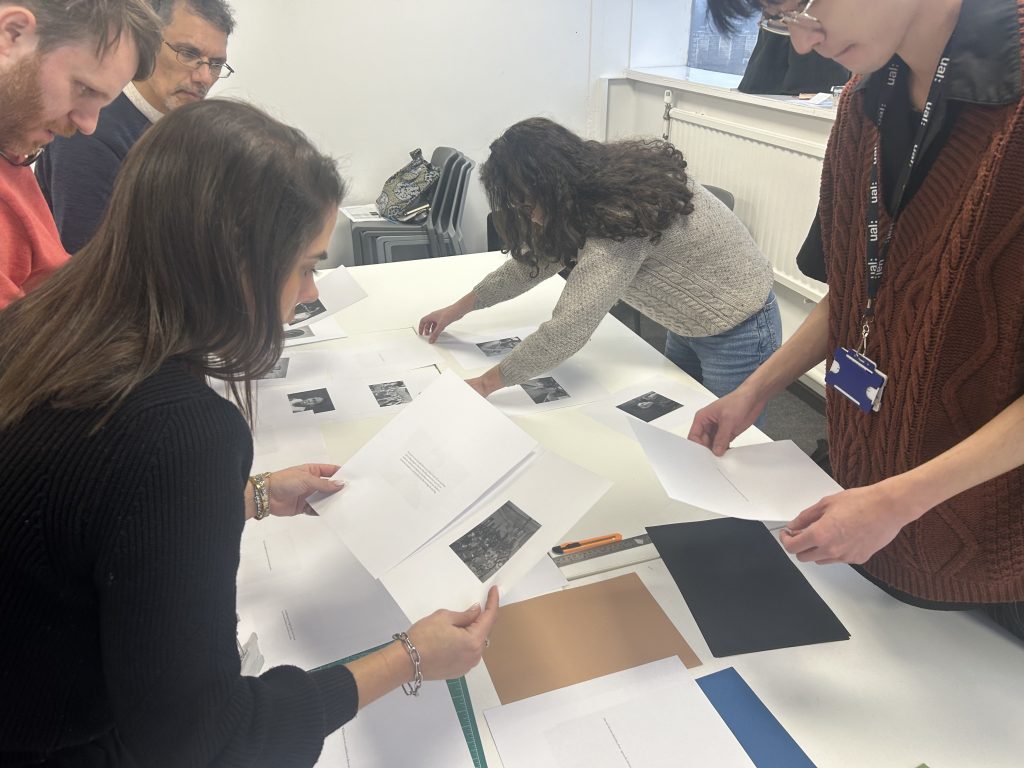
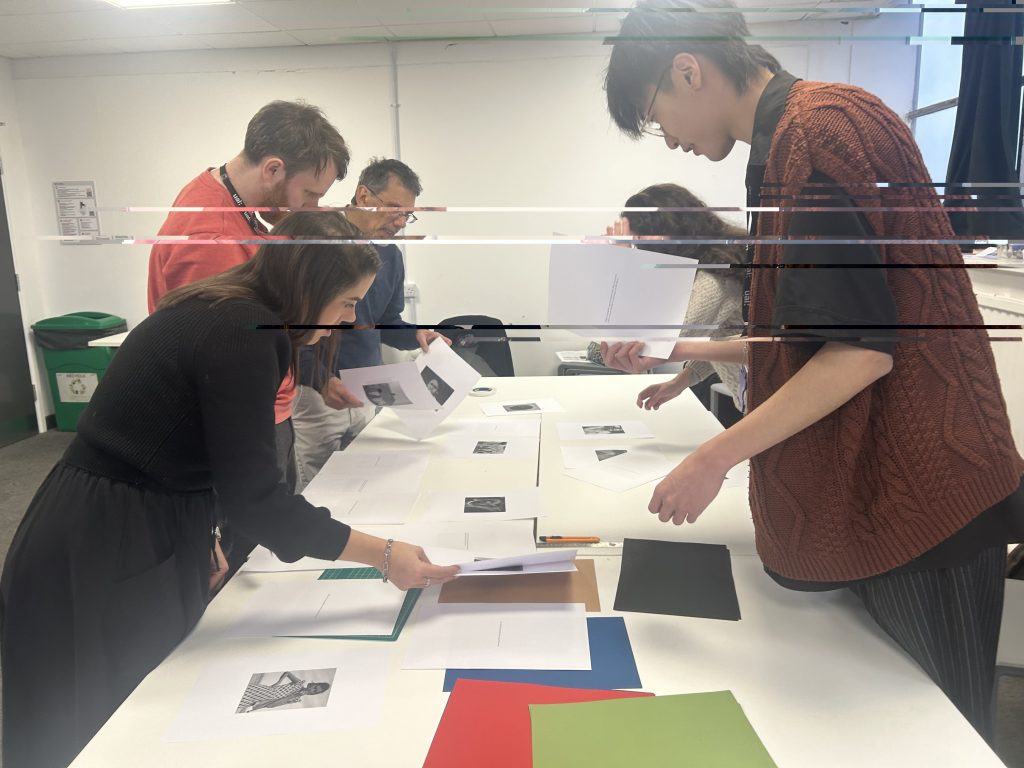
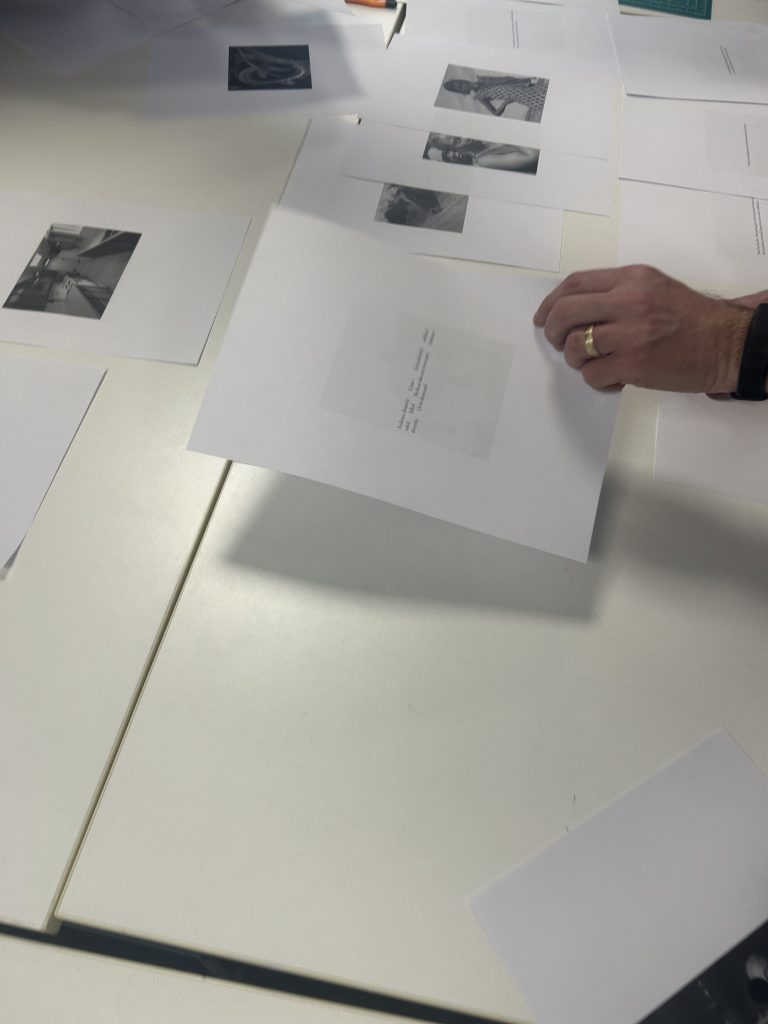
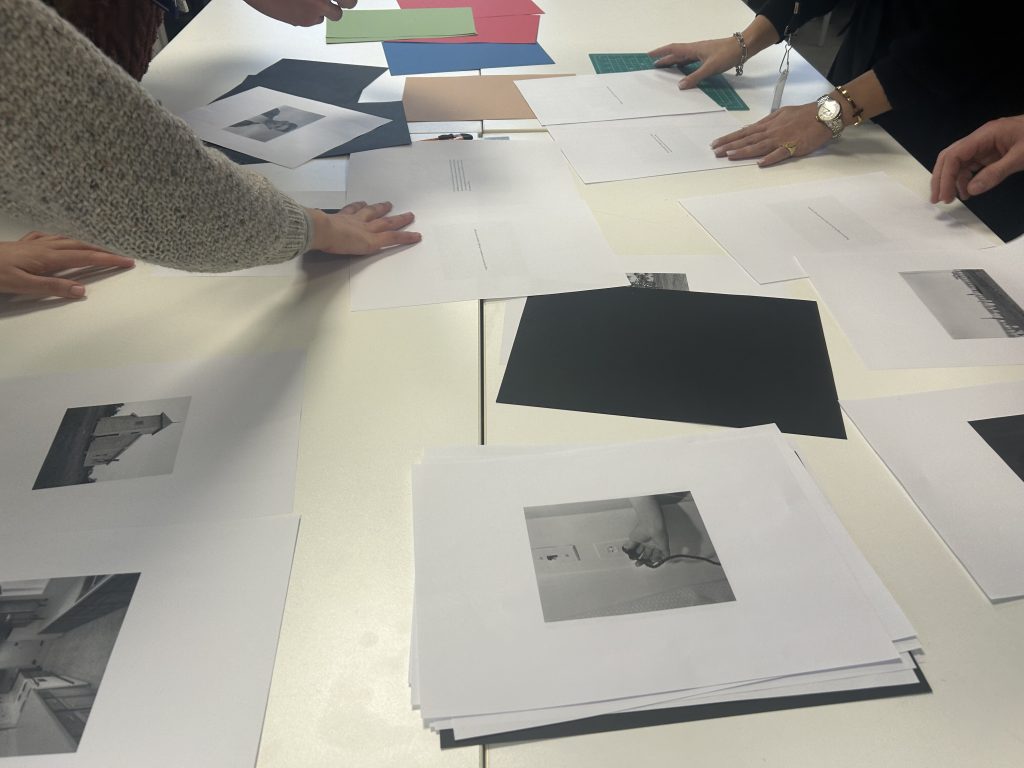
Feedback from Tim:
Max was next. In his quiet and modest way, he generated a lot of energy through this timed-task. Interesting how timing affected motivation, group focus and cooperation. We explored some good quality materials, images and texts of great interest; not naturally found together and hence generating stories and open narratives. Part way through he was able to give a short lecture on Walker Evans, well, who would have thought a lecture in context is so interesting. Decision making was key and his introduction to all the roles available very useful in differentiating the types of tasks we were doing. There was an extraordinary role for identification and a type of ‘pride’ or ownership or investment (much like Nathan had demonstrated) in that this was ‘our’ book. We therefore bought into the task. Image and text work is of course a mainstay of photographic art practices, so this was also a key skill in not only making narratives but reading and interpreting. Highly intuitive, we sometimes had little space but to make quick decisions. Tasks that allow students not to think, procrastinate or get nervous are demonstrated here to have a strength of their own. We used the tool for binding; and felt that sense of accomplishment. Always a guaranteed educational reward. Zine workshops have become a popular form of late; again. Thanks Max for a generously prepped task we all enjoyed.